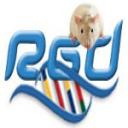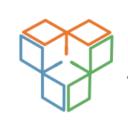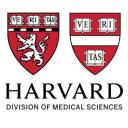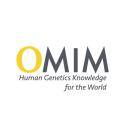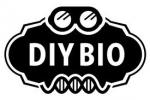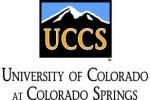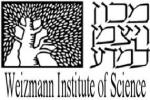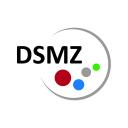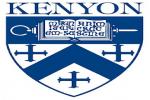NOVELTIES
The Mouse Genomes Project aims to use new sequencing technologies to sequence the genomes of 17 key mouse strains. We are releasing the raw sequence data, SNPs, short indels, structural variants and assemblies of each strain. Registration not required.
Click here for more informationsPublished on 2011-11-23 12:02:47
The Rat Genome Database (RGD) is a collaborative effort between leading research institutions involved in rat genetic and genomic research. Its goal is the establishment of a Rat Genome Database, to collect, consolidate, and integrate data generated from ongoing rat genetic and genomic research efforts and make these data widely available to the scientific community. A secondary, but critical goal is to provide curation of mapped positions for quantitative trait loci, known mutations and other phenotypic data. RGD was created to serve as a repository of rat genetic and genomic data, as well as mapping, strain, and physiological information. It also facilitates investigators research efforts by providing tools to search, mine, and analyze this data. Registration not required.
Click here for more informationsPublished on 2011-11-23 12:01:08
Sage Bionetworks is an open-access online resource that helps researchers of all stripes access network biology. The Sage Bionetworks Commons will be used to integrate diverse molecular mega-datasets, to build predictive bionetworks and to offer advanced tools proven to provide unique new insights into human disease biology. Registration required.
Click here for more informationsPublished on 2011-10-19 10:57:43
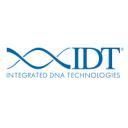
Add to my favorites
Remove from my favorites
Category: Physicochemical analysis of the primers
Subcategories: IDT
OligoAnalyzer is a web application from IDT that provides the opportunity to analyze hairpin and self-dimer of existing primers this site. Moreover this site allows you to BLAST the sequence against NCBI's database and measure the impact of incorporating 5'-modifications into the sequence. The oligos can then be ordered directly. Registration not required.
Click here for more informationsPublished on 2011-10-06 10:27:03
LALIGN/PLALIGN find internal duplications by calculating non-intersecting local alignments of protein or DNA sequences. LALIGN shows the alignments and similarity scores, while PLALIGN presents a "dot-plot" like graph. Registration not required.
Click here for more informationsPublished on 2011-10-06 10:09:52

Add to my favorites
Remove from my favorites
From SourceForge
Category: Sequencing and assembly software
AMOS is a collection of tools and class interfaces for the assembly of DNA reads. The package includes a robust infrastructure, modular assembly pipelines, and tools for overlapping, consensus generation, contigging, and assembly manipulation. Registration not required.
Click here for more informationsPublished on 2011-10-04 15:13:41
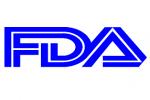
Add to my favorites
Remove from my favorites
MicroArray Quality Control
Category: DNA microarray data analysis
The purpose of the MAQC project is to provide quality control tools to the microarray community in order to avoid procedural failures and to develop guidelines for microarray data analysis by providing the public with large reference datasets along with readily accessible reference RNA samples. Registration not required.
Click here for more informationsPublished on 2011-10-04 14:51:22
PolyPhen-2 (Polymorphism Phenotyping v2) is a tool which predicts possible impact of an amino acid substitution on the structure and function of a human protein using straightforward physical and comparative considerations. Registration not required.
Click here for more informationsPublished on 2011-10-04 14:30:41
An Online Catalog of Human Genes and Genetic Disorders. OMIM is supported by a grant from NHGRI. Registration not required.
Click here for more informationsPublished on 2011-09-30 11:19:23
We are not a software development lab, but we develop a lot of software tools to support our research and make it all available for anyone to use and repurpose. Registration not required.
Click here for more informationsPublished on 2011-09-19 17:31:51
Do-it-yourself, DIY BIO, is a biology movement dedicated to making biology an accessible pursuit for citizen scientists, amateur biologists and biological engineers who value openness and safety Registration not required.
Click here for more informationsPublished on 2011-09-10 09:07:31
PS is an interactive Windows program from Vanderbilt University for performing power and sample size calculations. It can be used for studies with dichotomous, continuous, or survival response measures. Registration not required.
Click here for more informationsPublished on 2011-09-08 12:12:17
In this site it is possible to calculate online Cohen's d and effect size correlation r Registration not required.
Click here for more informationsPublished on 2011-09-08 12:11:42
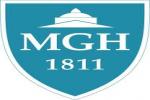
Add to my favorites
Remove from my favorites
Category: Statistical distribution
Subcategories: Power , clinical trials
Online calculation for sample size, power or the minimal detectable difference for parallel studies, crossover studies, or studies to find associations between variables, where the dependent variable is Success or Failure, a Quantitative Measurement, or a time to an event such as a survival time. Registration not required.
Click here for more informationsPublished on 2011-09-08 12:09:55
Bad Project is a funny Lady Gaga parody realized by scientists at the Hui Zheng lab at Baylor College of Medicine. Registration not required.
Click here for more informationsPublished on 2011-08-24 01:28:22
The Sergio Lombroso Foundation offers fellowships for Italian graduate students, post-docs, and visiting scientists, in the area of Cancer Research at the Weizmann Institute of Science in Israel. Registration not required.
Click here for more informationsPublished on 2011-08-11 08:59:28
DSMZ is the German Resource Center for Human, Animal Cell and microorganisms Culture Collection. The DSMZ currently hosts more than 79,000 bioresources, most of them are available from online catalogues. Registration required.
Click here for more informationsPublished on 2011-08-10 02:54:12
Evaluation of Top Italian scientists & academics using Google Scholar database (h-index > 30 only) Registration not required.
Click here for more informationsPublished on 2011-07-19 16:18:17

Add to my favorites
Remove from my favorites
Cell Line Integrated Molecular Authentication
Category: Cell lines
The Cell Line Integrated Molecular Authentication (CLIMA) database is the result of an integration effort aimed at including all certified STR profiles of human cell lines in a unique database. Its main feature is cell line identification according to the standard ANSI/ATCC ASN-0002-2011, but it also provides features for searching profiles by cell line name and by locus. Registration not required.
Click here for more informationsPublished on 2011-07-15 06:44:32
A complete tutorial on lentiviral vectors. Registration not required.
Click here for more informationsPublished on 2011-07-15 01:49:36


